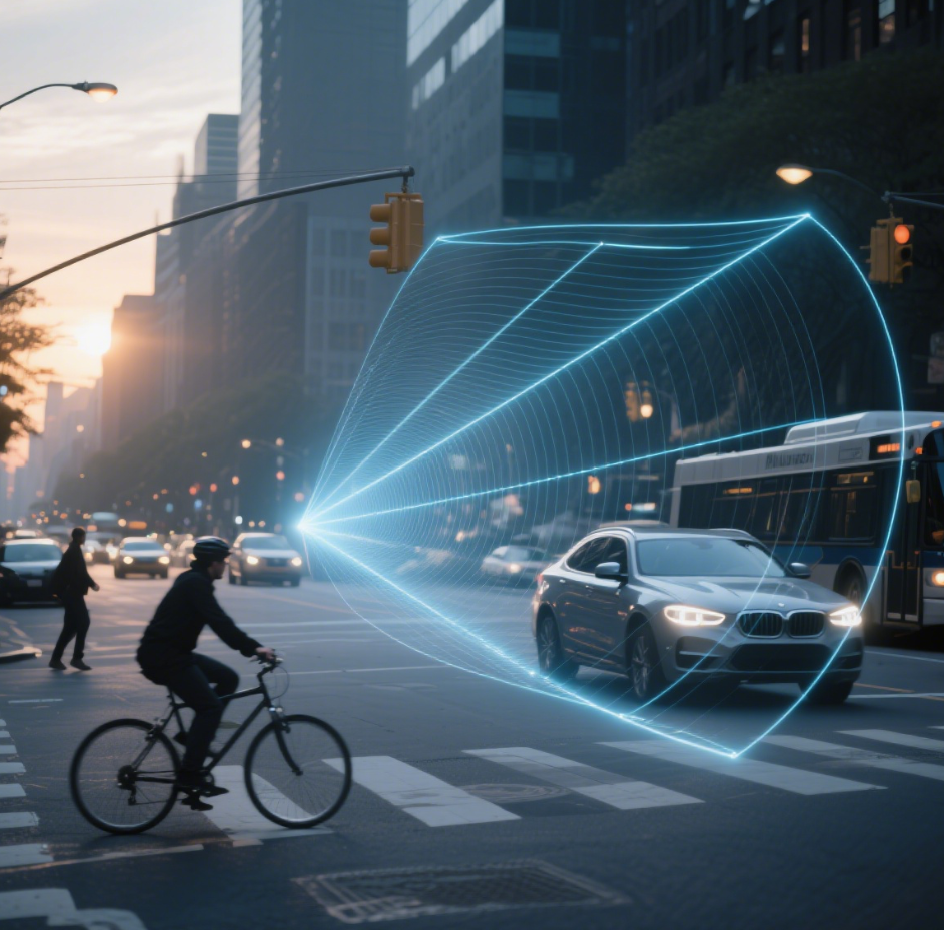Millimeter-wave (mmWave) radar has become a cornerstone technology for modern traffic monitoring, providing real-time detection of vehicles, pedestrians, and obstacles under varying conditions. While its performance in clear weather is well-documented, its behavior under challenging environmental factors is less frequently discussed but equally critical. Understanding how rain, fog, snow, and even urban clutter affect radar accuracy helps traffic authorities and system integrators deploy reliable monitoring solutions.
1. Why Environmental Sensitivity Matters in Traffic Monitoring
Unlike cameras, which suffer severely in low-light or fog, mmWave radar offers strong resilience because it operates in the 77–81 GHz band with high penetration capability. However, “resilience” does not mean “immune.” Even small degradations in radar signal quality can influence:
-
Range detection: How far radar can accurately detect vehicles.
-
Angular resolution: Whether two closely spaced objects can be distinguished.
-
Velocity estimation: The precision of measuring speed under adverse conditions.
These factors directly determine the safety and efficiency of smart intersections, highway monitoring, and automated enforcement systems.
2. Case Analysis: Radar in Heavy Rain vs. Dense Fog
Heavy Rain
-
Effect: Raindrops scatter and absorb radar signals, reducing maximum detection distance.
-
Impact: A radar specified for 0.4–300 m may only perform reliably up to 200 m in extreme rain.
-
Mitigation: Systems often incorporate dynamic power adjustment and multi-frame signal processing to maintain accuracy.
Dense Fog
-
Effect: Fog droplets are smaller than raindrops, producing less attenuation at mmWave frequencies.
-
Impact: Radar maintains nearly full range, significantly outperforming cameras or LiDAR in these conditions.
-
Example: Linpowave’s V300 radar remains operational in thick fog, ensuring continuous lane-level traffic monitoring when vision-based systems fail.
3. Snow and Road Clutter Challenges
Snowfall
-
Effect: Dry snow minimally affects signal propagation, but wet snow introduces attenuation similar to rain.
-
Impact: False echoes may appear due to snow accumulation on radar housings.
-
Solution: Radar enclosures with hydrophobic coatings and self-heating features help maintain sensor reliability.
Urban Multipath and Clutter
-
Effect: Radar waves can reflect from roadside infrastructure (signs, barriers, parked vehicles).
-
Impact: Multipath interference creates ghost targets, confusing monitoring systems.
-
Solution: Advanced algorithms such as CFAR (Constant False Alarm Rate) detection and Doppler filtering separate moving vehicles from static clutter.
4. Practical Deployment Considerations
When deploying mmWave radar in traffic systems, environmental robustness must be matched with installation strategy:
-
Mounting height: Higher placement reduces ground reflections but increases the risk of signal attenuation in rain.
-
Angle of incidence: Tilting radars slightly downward minimizes multipath reflections.
-
Maintenance: Regular cleaning of enclosures prevents accuracy degradation from dust, snow, or ice buildup.
-
Hybrid sensing: Combining mmWave radar with cameras ensures redundancy—radar works in adverse weather, and cameras provide classification detail.
5. Future Outlook: AI-Enhanced Environmental Compensation
The next evolution of mmWave radar lies in AI-driven adaptive sensing. By learning from large datasets under different weather and traffic conditions, radar systems can:
-
Automatically adjust signal thresholds for rain or fog.
-
Improve object classification accuracy by fusing radar signatures with environmental context.
-
Enable predictive traffic management where sensors “anticipate” conditions like congestion buildup during heavy rainfall.
This trend is already visible in research projects and advanced commercial deployments, making mmWave radar not only weather-resistant but also weather-adaptive.
Conclusion
Environmental factors—rain, fog, snow, and urban clutter—do impact mmWave radar performance, but with proper design and deployment, these effects can be minimized. Compared to vision-based systems, radar remains the most robust and scalable technology for 24/7 traffic monitoring. As companies like Linpowave continue to advance radar technology with intelligent signal processing, cities can rely on radar systems that perform consistently across diverse weather and urban scenarios.



